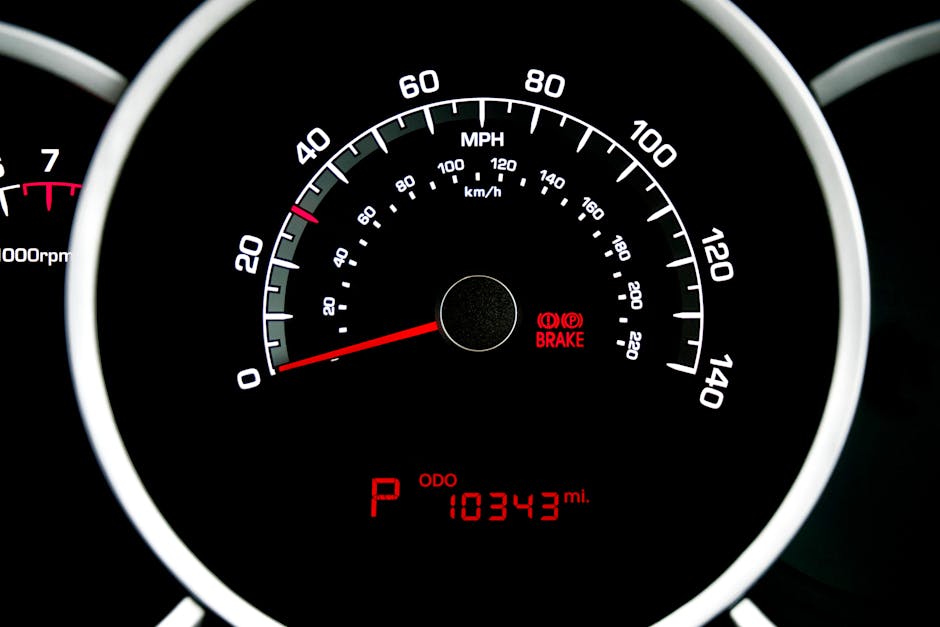What's The Difference Between Miles And Kilometres? Our Guide Explains
Imagine you are embarking on a journey, with the destination unknown. As you plan your route, you come across two options: miles and kilometres. These units of measurement serve as guides to help us navigate our physical world, but what sets them apart?
In this comprehensive guide, we will delve into the rich history and origins of miles and kilometres, explore the conversion methods and formulae that bridge these two systems, examine their usage and adoption around the globe, and weigh the pros and cons of each.
Through practical examples and scenarios, we will shed light on how these measurements impact our daily lives. By understanding the differences between miles and kilometres, you gain control over your navigational decisions in an ever-shrinking world where precision matters.
Join us as we unravel the intricacies of these measures to enhance your understanding of distance calculation and make informed choices on your next journey.
Key Takeaways
- Miles and kilometres are units of measurement used for navigation.
- Conversion formulae: multiply miles by 1.60934 to convert to kilometres, divide kilometres by 1.60934 to convert to miles.
- 1 mile is approximately equal to 1.6 kilometres.
- The choice between miles and kilometres depends on regional convention, personal familiarity, and international communication needs.
History and Origins of Miles and Kilometres

The historical development and origins of miles and kilometres shed light on the fascinating way in which these units of measurement have evolved over time. The evolution and changes in miles and kilometres are closely tied to the cultural significance of the societies that developed them.
Miles, as a unit of measurement, has its origins in ancient Rome. The Romans used a system called 'mille passus,' which translates to 'a thousand paces.' A pace was considered to be two steps, so a mile equated to 5,000 Roman feet or approximately 1,480 metres. This system spread throughout Europe during Roman rule and continued to be widely used for centuries.
Kilometres, on the other hand, have their roots in France during the late 18th century. In response to the need for a more standardised unit of measurement, the French Academy of Sciences proposed using one ten-thousandth of the distance from the North Pole to the Equator as a new unit called 'kilometre.' This proposal gained significant support due to its simplicity and ease of conversion between different units.
Over time, both miles and kilometres underwent further refinements and adaptations. With advancements in technology and increased global connectivity, conversion methods and formulae were developed to allow easy interconversion between these two systems. These methods take into account precise mathematical calculations based on fixed values for each unit.
The history behind miles and kilometres highlights how units of measurements have been shaped by societal needs and cultural contexts. Understanding their origins provides insight into why certain countries continue to use one system over another today. Consequently, exploring conversion methods allows for seamless transitions between these two systems without any loss in accuracy or precision.
Conversion Methods and Formulae

Conversion methods and formulae play a crucial role in accurately converting measurements from miles to kilometres or vice versa. When it comes to metric conversion, understanding the relationship between these two units of measurement is essential.
Here are three sub-lists that depict the conversion process with clarity:
- Conversion Formulae:
- To convert miles to kilometres: multiply the number of miles by 1.60934.
- To convert kilometres to miles: divide the number of kilometres by 1.60934.
- Decimal Point Shift:
- To convert miles to kilometres, move the decimal point one place to the right and then multiply by 1.6.
- To convert kilometres to miles, move the decimal point one place to the left and then divide by 1.6.
- Reference Points:
- A common reference point for quick estimation is that 1 mile is approximately equal to 1.6 kilometres.
- For more precise conversions, using conversion formulae or decimal point shifting is recommended.
Understanding these methods allows individuals who desire control over their measurements to easily switch between miles and kilometres without relying on online convertors or complex calculations.
Transitioning into the subsequent section about 'usage and adoption around the world', it is important to note that accurate metric conversion plays a significant role in international communication and trade where different countries use either miles or kilometres as their primary unit of measurement.
Usage and Adoption Around the World

Usage and adoption of miles and kilometres as units of measurement vary significantly across different countries worldwide.
While the metric system, which includes the use of kilometres, is widely accepted globally, there are still a few countries that continue to use the imperial system, which includes miles.
The global acceptance of kilometres can be attributed to its simplicity and ease of conversion in scientific calculations.
In most parts of the world, kilometres are used for measuring distances on road signs, maps, and in everyday conversations. This widespread usage has cultural implications as well.
For example, in countries where English is spoken as a first language such as the United Kingdom and Australia, there has been a gradual shift towards adopting kilometres due to its prevalence in international contexts.
On the other hand, some countries like the United States have not fully embraced the metric system and continue to use miles for various purposes including measuring distance on road signs and determining vehicle speed limits.
This resistance to adopt kilometres can be attributed to factors such as historical precedence and cultural inertia.
The choice between using miles or kilometres has advantages and disadvantages that will be explored further in the subsequent section about 'pros and cons of miles and kilometres'.
It is important to note that while there are ongoing efforts towards standardisation through global agreements like the International System of Units (SI), it remains a complex process influenced by factors such as national identity, tradition, and practicality.
Pros and Cons of Miles and Kilometres

Advantages and disadvantages of miles and kilometres as units of measurement will be explored in the subsequent section, providing a comprehensive analysis for the audience.
Both miles and kilometres have their own unique advantages and disadvantages.
One advantage of using miles as a unit of measurement is its familiarity in certain regions, particularly in the United States and the United Kingdom. This makes it easier for individuals to estimate distances when planning trips or navigating through familiar areas. Additionally, miles are often used in sports such as running or cycling, where race distances are commonly measured in miles.
On the other hand, one disadvantage of using miles is that it can be confusing for those who are accustomed to using kilometres. Converting between the two can lead to errors if not done accurately. Furthermore, many countries around the world use kilometres as their primary unit of measurement for distance. This can pose challenges for international communication and coordination.
In contrast, one advantage of using kilometres is its compatibility with the metric system, which is widely adopted worldwide. The metric system offers a standardised approach to measurements across different disciplines, making it easier to communicate and compare data internationally.
However, a potential disadvantage of kilometres is its lack of familiarity in some regions, especially where miles are traditionally used. People who are more comfortable with mile-based measurements may find it difficult to conceptualise distances expressed in kilometres.
Both miles and kilometres have their own advantages and disadvantages as units of measurement for distance. The choice between them depends on factors such as regional convention, personal familiarity, and international communication needs.
Transitioning into the subsequent section about practical examples and scenarios will provide further insight into how these measurements apply in real-life situations without losing control over precision and objectivity.
Practical Examples and Scenarios

Practical applications of miles and kilometres as units of measurement can be seen in various real-life scenarios, providing a deeper understanding of their significance in everyday situations. One key aspect is the ability to convert between miles and kilometres for everyday measurements.
For example, when planning a road trip, it is important to know the distance between two locations in order to estimate travel time and fuel consumption accurately. By converting the distance from miles to kilometres or vice versa, travellers can make informed decisions regarding their journey.
Furthermore, the impact of miles and kilometres extends beyond personal travel. In transportation industries such as aviation and shipping, distances are typically measured using nautical miles or kilometres. These units help pilots calculate flight durations and fuel requirements more precisely, ensuring safe and efficient operations. Similarly, shipping companies rely on accurate measurements in kilometres or nautical miles to estimate delivery times and plan logistics effectively.
The use of miles or kilometres also affects international trade and commerce. Countries that predominantly use one unit may face challenges when dealing with counterparts who use the other unit. Conversion errors could lead to miscommunication or financial losses in business transactions involving distance-based quantities.
Understanding how to convert between miles and kilometres is essential for everyday conversions related to travel planning and transportation efficiency. The choice of unit has a significant impact on various aspects of life, including personal journeys, aviation operations, shipping logistics, as well as international trade. Being knowledgeable about both units allows individuals and businesses alike to navigate these scenarios with accuracy and control over their measurements.
Frequently Asked Questions
How do miles and kilometres compare to other units of measurement, such as feet or metres?
The comparison of miles and kilometres with other units of measurement, such as feet or metres, is akin to comparing a delicate ballet performance to a chaotic mosh pit. Despite the complexity of their relationship, conversion formulae provide a means to bridge the gap.
For instance, one mile is equivalent to 5,280 feet or 1.609 kilometres, while one kilometre is approximately 0.621 miles or 3,281 feet.
These precise conversions allow for seamless transitions between these units.
Are there any countries that still use both miles and kilometres interchangeably?
There are several countries that still use both miles and kilometres interchangeably.
For instance, the United Kingdom and Ireland have traditionally used miles for road distances, while using kilometres for scientific and metric purposes.
In these countries, conversion between miles and kilometres is necessary to ensure consistency in measurements.
This practise reflects historical reasons and a gradual transition towards adopting the metric system.
Can you provide some examples of situations where using miles is more practical than using kilometres?
In the aviation industry, the use of miles over kilometres offers distinct advantages. Miles provide a concise and standardised unit of measurement for speed, fuel consumption, and navigation.
Pilots are trained to interpret airspeed indicators calibrated in knots, which are nautical miles per hour.
Furthermore, long distance road trips may also favour the use of miles due to their familiarity in countries like the United States where road signage and vehicle odometers are typically displayed in miles rather than kilometres.
Are there any instances where using kilometres is more advantageous than using miles?
There are several advantages to using kilometres instead of miles in certain instances.
One advantage is the ease of conversion between miles and kilometres, as the conversion factor is a simple 1.60934. This allows for straightforward calculations and measurements when working with distances.
Additionally, kilometres are used as the standard unit of measurement in most countries around the world, making it more practical for international travel and communication.
Therefore, using kilometres can be advantageous in situations that require global consistency and easy conversions.
How do miles and kilometres affect the accuracy of GPS navigation systems?
The conversion between miles and kilometres in GPS navigation systems is crucial for accurate measurements.
Miles are a unit of measurement commonly used in the United States, while kilometres are more prevalent globally.
Converting between these units requires multiplying or dividing by a conversion factor of 1.60934.
Advantages of using miles include familiarity for US users, while advantages of using kilometres include global standardisation.
Disadvantages may arise from confusion and potential errors when converting between the two units.
Contact us to discuss our services now!

